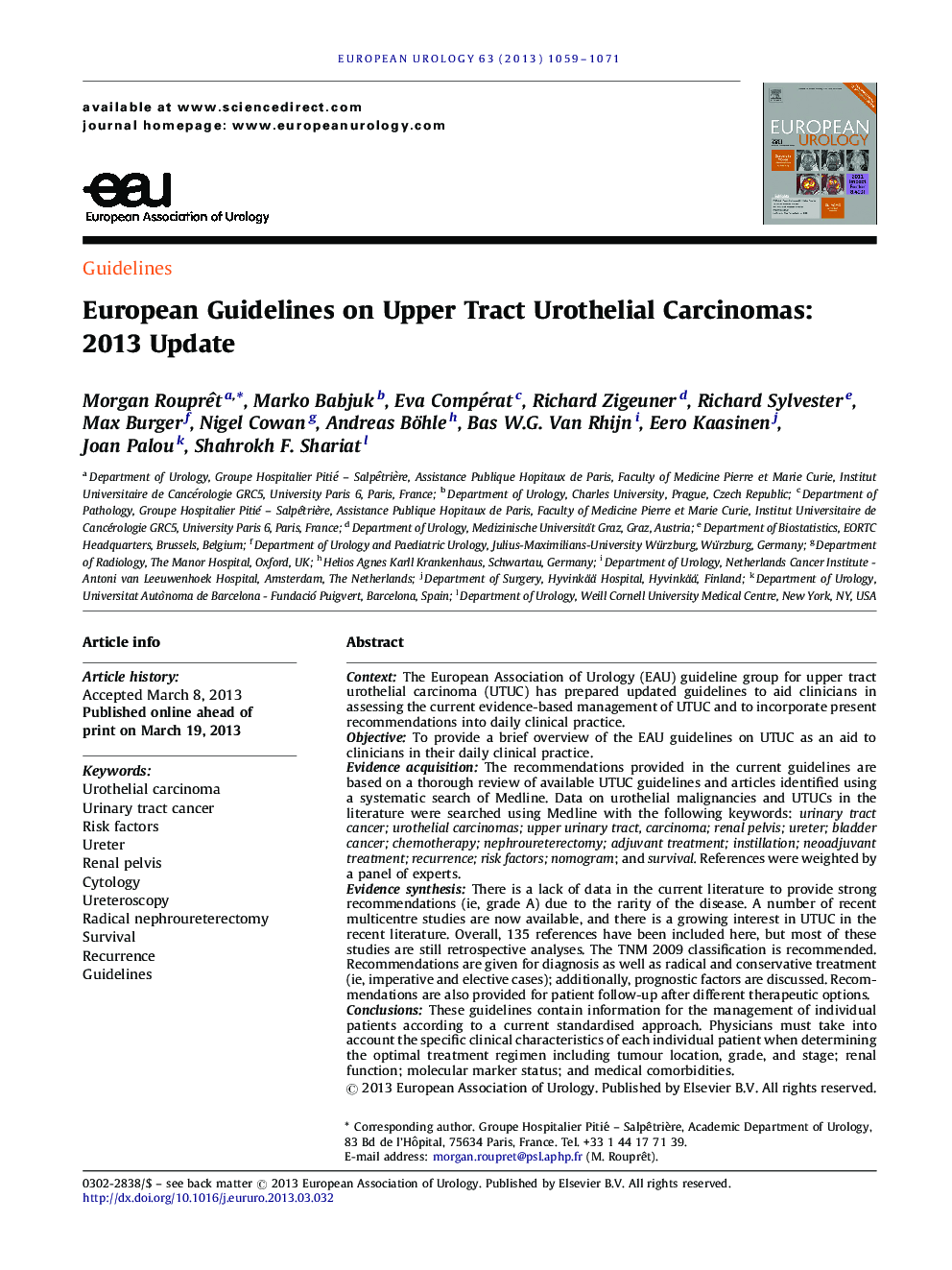| Article ID | Journal | Published Year | Pages | File Type |
|---|---|---|---|---|
| 3925449 | European Urology | 2013 | 13 Pages |
ContextThe European Association of Urology (EAU) guideline group for upper tract urothelial carcinoma (UTUC) has prepared updated guidelines to aid clinicians in assessing the current evidence-based management of UTUC and to incorporate present recommendations into daily clinical practice.ObjectiveTo provide a brief overview of the EAU guidelines on UTUC as an aid to clinicians in their daily clinical practice.Evidence acquisitionThe recommendations provided in the current guidelines are based on a thorough review of available UTUC guidelines and articles identified using a systematic search of Medline. Data on urothelial malignancies and UTUCs in the literature were searched using Medline with the following keywords: urinary tract cancer; urothelial carcinomas; upper urinary tract, carcinoma; renal pelvis; ureter; bladder cancer; chemotherapy; nephroureterectomy; adjuvant treatment; instillation; neoadjuvant treatment; recurrence; risk factors; nomogram; and survival. References were weighted by a panel of experts.Evidence synthesisThere is a lack of data in the current literature to provide strong recommendations (ie, grade A) due to the rarity of the disease. A number of recent multicentre studies are now available, and there is a growing interest in UTUC in the recent literature. Overall, 135 references have been included here, but most of these studies are still retrospective analyses. The TNM 2009 classification is recommended. Recommendations are given for diagnosis as well as radical and conservative treatment (ie, imperative and elective cases); additionally, prognostic factors are discussed. Recommendations are also provided for patient follow-up after different therapeutic options.ConclusionsThese guidelines contain information for the management of individual patients according to a current standardised approach. Physicians must take into account the specific clinical characteristics of each individual patient when determining the optimal treatment regimen including tumour location, grade, and stage; renal function; molecular marker status; and medical comorbidities.
